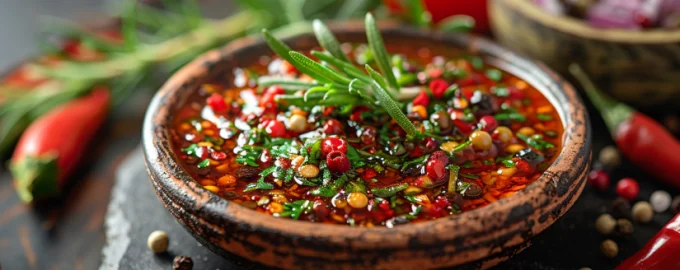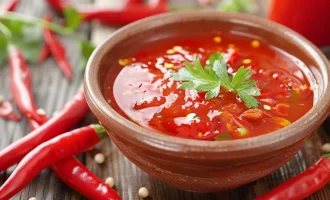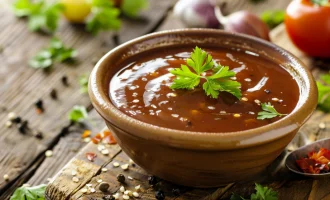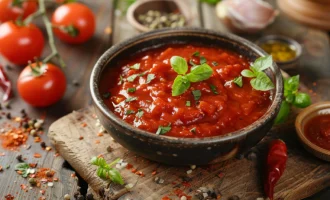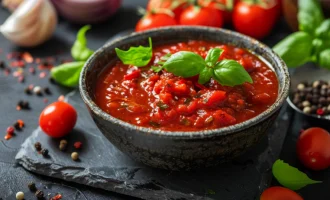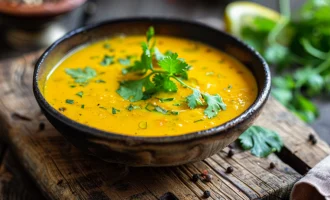Spicy sauce, with its universal appeal, traces back to various cuisines around the world, each adding its unique blend of ingredients to create something that elevates dishes with heat and depth of flavor. From the fiery salsas of Latin America to the piquant chutneys of India, spicy sauces are celebrated for their ability to transform simple ingredients into complex, flavorful dishes. These sauces can be used as condiments, dips, or glazes, and are commonly paired with everything from rolls and wraps to grilled meats and vegetables.
- Fresh chili peppers (e.g., jalapeños, habaneros, or serranos) 100 g
- Garlic 3 cloves
- Tomato paste 50 g
- Vinegar (white or apple cider) 30 ml
- Water 60 ml
- Honey or sugar 15 g
- Salt 5 g
- Ground cumin 2 g
- Paprika (smoked or sweet) 5 g
- Lime juice 15 ml
- If you prefer a milder sauce, remove the seeds and membranes from the chili peppers. For a hotter sauce, leave some or all of the seeds in.
- In a blender or food processor, combine the chopped chili peppers, minced garlic, tomato paste, vinegar, water, honey (or sugar), salt, ground cumin, and paprika. Blend until smooth. For an added tang, include lime juice in the blend.
- Transfer the blended mixture to a saucepan and bring to a simmer over medium heat. Reduce the heat and let it simmer gently for 10-15 minutes, or until the sauce thickens slightly. Stir occasionally to prevent sticking.
- Taste the sauce and adjust the seasoning as needed, adding more salt, honey, or vinegar to balance the flavors.
- Allow the sauce to cool to room temperature. If you prefer a smoother consistency, you can strain the sauce through a fine-mesh sieve to remove any solid bits.
Storage Tips
Store the spicy sauce in an airtight container in the refrigerator for up to 2 weeks. The acidity from the vinegar and lime juice acts as a natural preservative, extending the sauce’s shelf life.
Useful Properties of the Main Ingredient
Chili peppers, the main ingredient in spicy sauce, are rich in vitamins C and A, potassium, and capsaicin. Capsaicin is known for its metabolism-boosting properties and has been linked to various health benefits, including pain relief and reducing the risk of chronic diseases.
Interesting Facts
- The use of chili peppers dates back thousands of years in the Americas, with evidence suggesting they were domesticated more than 6,000 years ago.
- Capsaicin, the compound that gives chili peppers their heat, is actually a defense mechanism against fungal attack.
- Spicy sauces not only add heat to dishes but are also believed to stimulate the metabolism and have antibacterial properties due to the ingredients used.
This recipe for spicy sauce delivers a fiery kick and rich flavor that can be adjusted to suit your heat preference. Whether used as a dip for rolls, a condiment for tacos, or a glaze for grilling, this homemade spicy sauce is sure to add zest to any meal.

